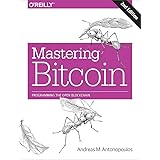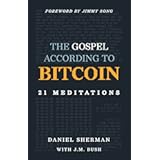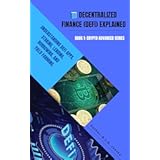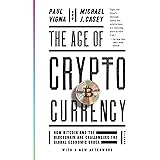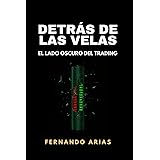Your Essential Guide to Cryptocurrency Trading: From Fiat to First Trade
Imagine, if you will, standing at the precipice of a vast, digital ocean, waves of opportunity crashing at its shores. This is often how the world of cryptocurrency trading can feel to a newcomer. The initial steps, particularly migrating from traditional fiat currencies to the dynamic realm of digital assets, are frequently perceived as daunting. Navigating the myriad of exchanges, understanding trading pairs, and executing a confident trade can seem like an insurmountable challenge. Fortunately, for those looking to embark on this exciting journey, a clear pathway does exist. The accompanying video offers a fantastic, straightforward walkthrough of how to begin trading crypto, specifically utilizing established platforms like Coinbase and Binance. This guide aims to supplement that visual tutorial, expanding upon the fundamental concepts and offering deeper insights to solidify your understanding of the process.
Establishing Your Foundation: Acquiring Your First Bitcoin (BTC)
The foundational step in the cryptocurrency trading ecosystem, as highlighted in the video, involves acquiring a primary digital asset, typically Bitcoin (BTC), using fiat currency. Coinbase is often recommended for this initial acquisition due to its user-friendly interface and robust security measures. This platform functions as an on-ramp, seamlessly converting your traditional currency into cryptocurrency.
It is important to understand that while direct purchases of various altcoins with fiat are becoming more prevalent on platforms like Binance, a common strategy, particularly for accessing a wider array of trading pairs, involves first purchasing a major cryptocurrency such as Bitcoin or Ethereum. Therefore, a secure and efficient method for purchasing BTC is paramount.
Once your Coinbase account has been established and verified, the process of buying Bitcoin is streamlined. This involves linking a payment method, such as a bank account or debit card, and executing a purchase. For demonstrative purposes, the video illustrates a transaction where a modest sum, such as $50 worth of Bitcoin, is acquired. This provides a practical starting point for new traders without necessitating a substantial initial investment. Furthermore, the robust security protocols, including Two-Factor Authentication (2FA), are highly recommended to safeguard these initial investments. Activation of 2FA adds an essential layer of protection to your digital assets, significantly mitigating risks associated with unauthorized access.
Seamlessly Transferring Assets: Coinbase to Binance
With Bitcoin now residing in your Coinbase wallet, the subsequent step, crucial for engaging in more diversified trading, involves transferring these assets to a dedicated cryptocurrency exchange like Binance. Binance, celebrated for its extensive selection of altcoins and advanced trading features, acts as the primary trading hub. The video thoughtfully guides viewers through this inter-platform transfer, a process which, while seemingly complex, is rather straightforward.
Accessing your Binance account, which can be easily created with a straightforward registration process (and potentially benefit from referral links offering perks like 5% back on trades), one must navigate to the “Deposit” section for Bitcoin (BTC). A unique wallet address is generated for your Binance account. This alphanumeric string is the digital destination for your incoming Bitcoin. The precision required during this step cannot be overstated; an incorrect address could result in irretrievable loss of funds. Thus, a meticulous verification process, such as matching the initial and final characters of the address, is an essential best practice.
Upon copying the Binance deposit address, a return to Coinbase is necessitated. From your Coinbase Bitcoin wallet, the “Send” function is utilized. The copied Binance address is then pasted into the recipient field. As observed in the video, the transfer duration can vary, typically taking anywhere from a few minutes to approximately 5-10 minutes, contingent upon blockchain network congestion. It is therefore often advised that patience be exercised during this period, as the funds are securely in transit across the blockchain network.
Navigating the Binance Exchange: Your Trading Interface
Once your Bitcoin has successfully arrived in your Binance wallet, the gateway to active trading is opened. Binance presents a comprehensive trading interface, which, while offering advanced functionalities, also provides a “Basic” view ideal for beginners. This simplified interface allows for an accessible introduction to the dynamics of crypto trading.
A fundamental concept to grasp is the nature of trading pairs. In the crypto market, assets are typically traded against other cryptocurrencies, not always directly against fiat currencies like USD. For instance, you might encounter pairs such as ADA/BTC or XRP/BTC. This signifies that you are using Bitcoin (BTC) as the base currency to buy or sell other digital assets (altcoins) like Cardano (ADA) or Ripple (XRP). Understanding this distinction is pivotal, as it influences how trades are executed and profits are calculated.
Executing Trades: Market vs. Limit Orders
The core of cryptocurrency trading revolves around executing buy and sell orders. The video demonstrates two primary order types: Market Orders and Limit Orders.
- Market Orders: When a market order is placed, your trade is executed immediately at the best available current market price. This approach prioritizes speed of execution. Imagine if a rapidly moving asset is identified, and immediate acquisition is desired; a market order ensures this swift purchase. However, the exact price might fluctuate slightly from what is seen at the moment of clicking, especially in volatile markets.
- Limit Orders: Conversely, a limit order allows traders to specify a precise price at which they wish to buy or sell an asset. This type of order remains open in the order book until the market price reaches the predetermined limit price or until it is manually cancelled. For instance, if XRP is currently priced at 2649 Satoshis (a small unit of Bitcoin) but a trader believes a better entry point exists at 2638 Satoshis, a limit buy order can be placed at 2638. The order will only be filled if the price drops to that level. This method is favored by those who employ technical analysis to identify optimal entry and exit points, as it provides greater control over the trade’s execution price.
The distinction between these two order types is a cornerstone of strategic trading. Market orders offer immediacy, while limit orders provide control and the potential for better pricing, albeit with the risk that the order may not be filled if the price target is not met.
Monitoring and Taking Profit
Once a buy order is filled, the acquired assets reside in your Binance account. The goal of trading, naturally, is to generate profit. This is typically achieved by selling the asset at a higher price than it was purchased for. The process of selling mirrors that of buying; a limit sell order can be placed at a desired profit target. For example, if XRP was bought at 2638 and it rises to 2650, a limit sell order for your holdings at 2650 would capitalize on this price appreciation.
The video demonstrates how a profit calculation might appear, showcasing the difference between the buy and sell prices. Upon a successful sale, the proceeds are typically returned to your BTC balance, ready for subsequent trades or withdrawal. The efficiency of order execution on Binance is generally high, with smaller orders often being filled swiftly, though larger transactions may require more time to be absorbed by the market.
Advanced Tools and Security Considerations
Beyond the basic trading functions, Binance offers more sophisticated tools, including stop-limit orders and margin trading. While these are typically reserved for more experienced traders, an awareness of their existence is beneficial. A stop-limit order, for example, combines a stop price and a limit price, allowing for automated risk management. Furthermore, the platform’s evolution has seen the introduction of features like loans, staking, and lending, reflecting the expanding utility of digital assets within a centralized exchange environment.
For chart analysis and market monitoring, external platforms such as TradingView are widely utilized by expert traders. As mentioned, TradingView offers advanced charting capabilities and a highly customizable interface, allowing traders to apply various technical indicators to identify potential trends and price movements. Many prefer to conduct their in-depth analysis on TradingView and then execute trades on Binance, leveraging the strengths of both platforms. The Binance platform itself integrates similar charting software, providing a convenient all-in-one solution for those who prefer to remain within a single interface.
Ultimately, starting to trade cryptocurrency involves a combination of understanding market mechanics, utilizing reliable platforms, and consistently prioritizing security. The journey from initial Bitcoin purchase on Coinbase to executing strategic trades on Binance is a well-trodden path, and with the foundational knowledge provided, new participants are well-equipped to navigate the volatile yet potentially rewarding landscape of cryptocurrency trading.


